One of the most crucial decisions when selecting hinges is choosing the right material. While metal is the dominant material, the specific type of metal significantly impacts performance, durability, and longevity. This guide provides a comprehensive breakdown of five common hinge materials, helping you make informed choices for any application.
Hinges: they’re more than just metal. They’re the silent backbone of countless applications. But choosing the right metal is critical. This guide breaks down the five key hinge materials, empowering you to make informed decisions that ensure durability and longevity.
Before diving deep into the specifics, here’s a side-by-side comparison of the five most commonly used hinge materials. This table highlights their descriptions, advantages, disadvantages, and typical applications—giving you a quick overview to help guide your selection process.
Use this table as a reference point while exploring the detailed insights below.
Hinge Material Comparison Table
| Material | Description | Advantages | Disadvantages | Common Applications |
| Cold-Rolled Steel | Iron alloy formed at room temp, enhancing strength and surface finish. | – High strength & durability- Cost-effective | – Prone to rust without coating- Less corrosion-resistant | Interior doors, furniture, general hardware |
| Stainless Steel | Iron alloy with carbon; naturally forms a rust-resistant protective layer. | – Excellent rust resistance- Long-lasting- Low maintenance | – Higher cost- Difficult to machine | Outdoor gates, marine use, kitchens, hospitals |
| Aluminum | Lightweight pure metal with natural corrosion resistance | – Lightweight- Corrosion-resistant- Low-cost | – Lower strength- Galvanic corrosion with other metals | Aircraft parts, lightweight doors/windows |
| Brass | Alloy of copper and zinc; highly malleable and visually appealing | – Aesthetic appeal- Easy to shape- Corrosion-resistant | – Soft and crack-prone- Expensive | Decorative items, antique furniture, low-stress hardware |
| Bronze | Copper and tin alloy offering strength and excellent friction resistance | – Durable- High ductility- Rust resistant- Low friction | – More costly than brass- Heavier than aluminum | Marine hardware, bearings, architectural applications |
This comparison table offers a quick reference to the strengths and limitations of each hinge material. Whether your priority is durability, appearance, weight, or corrosion resistance, understanding these key factors will help you choose the material that best fits your specific needs. Now, let’s take a closer look at each hinge material in detail.
1. Cold-Rolled Steel: Strength and Durability
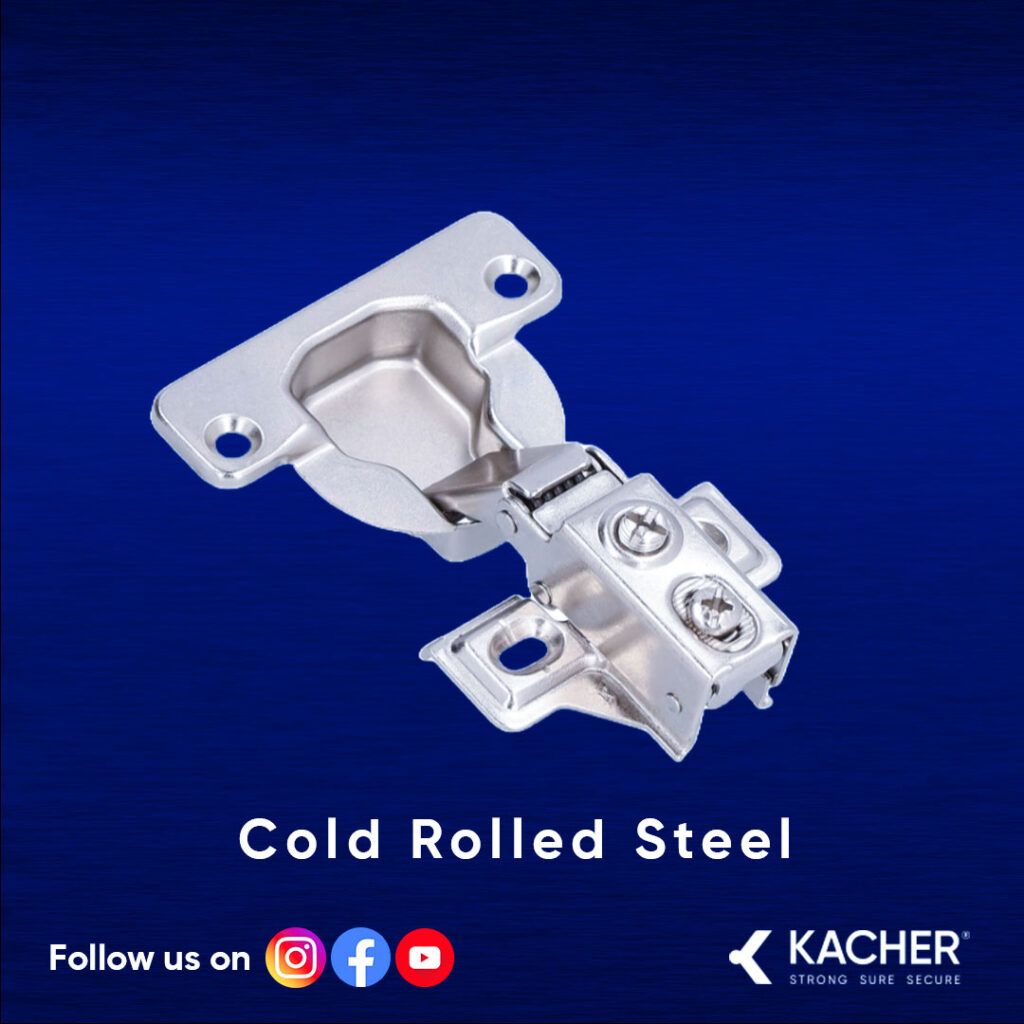
- Description:
- Cold-rolled steel, or cold-formed steel, is an iron alloy processed at room temperature. This process enhances its strength and durability.
- It is formed by rolling the steel at room temperature instead of high temperatures. This creates a stronger material with a better surface finish.
- Advantages:
- High strength and durability.
- Long-lasting and reliable.
- Cost-effective for many applications.
- Disadvantages:
- Susceptible to rust and corrosion in humid or outdoor environments without proper protective coatings.
- Less corrosion resistant than stainless steel or aluminum.
- Applications:
- Manufacturing-related applications.
- Interior doors and furniture.
- General-purpose hardware.
2. Stainless Steel: Corrosion Resistance and Longevity
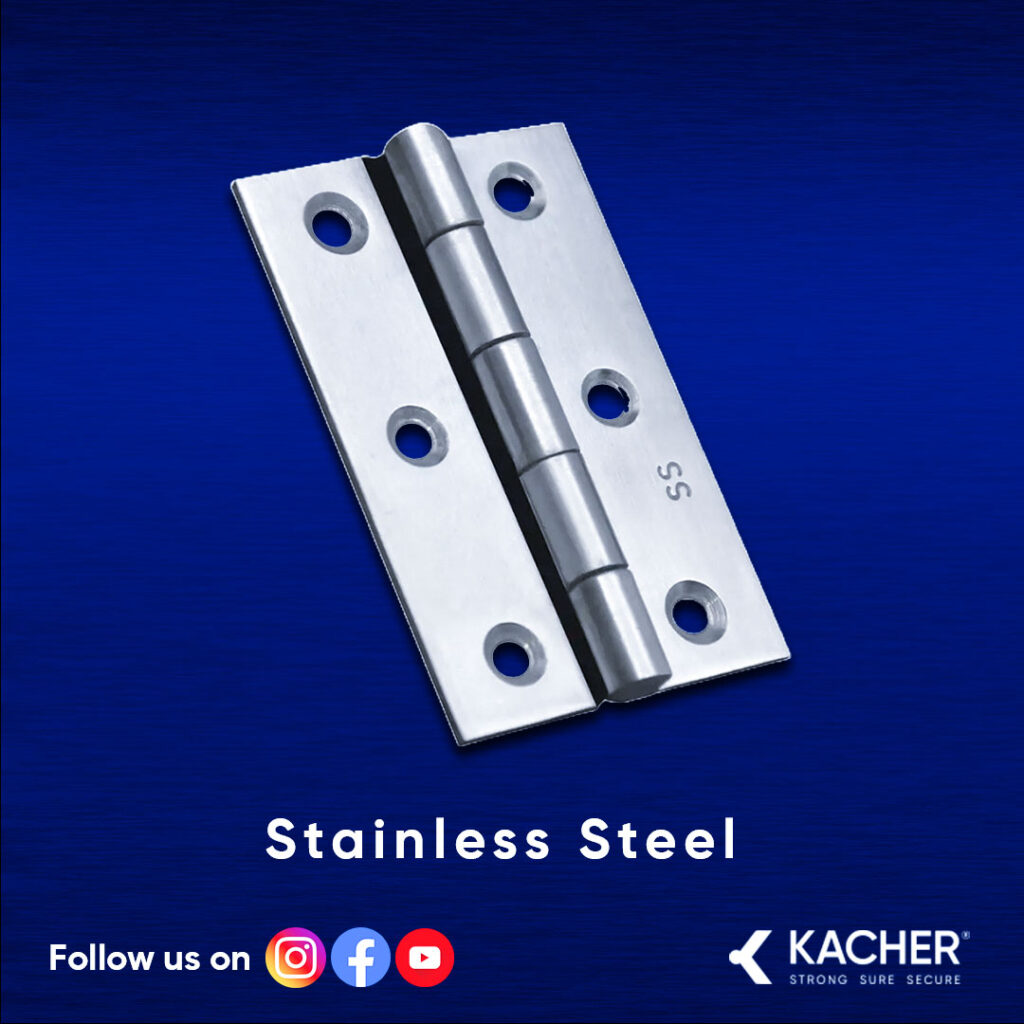
- Description:
- Stainless steel is an iron alloy with added carbon, providing exceptional corrosion resistance.
- The carbon content creates a protective layer that prevents rust and degradation.
- Advantages:
- Excellent corrosion and rust resistance.
- High durability and longevity.
- Low maintenance.
- Disadvantages:
- Higher cost compared to cold-rolled steel or aluminum.
- Can be more difficult to machine.
- Applications:
- Outdoor applications (gates, fences).
- Marine environments.
- Food processing and medical equipment.
- Kitchen and bathroom fixtures.
3. Aluminum: Lightweight and Corrosion-Resistant
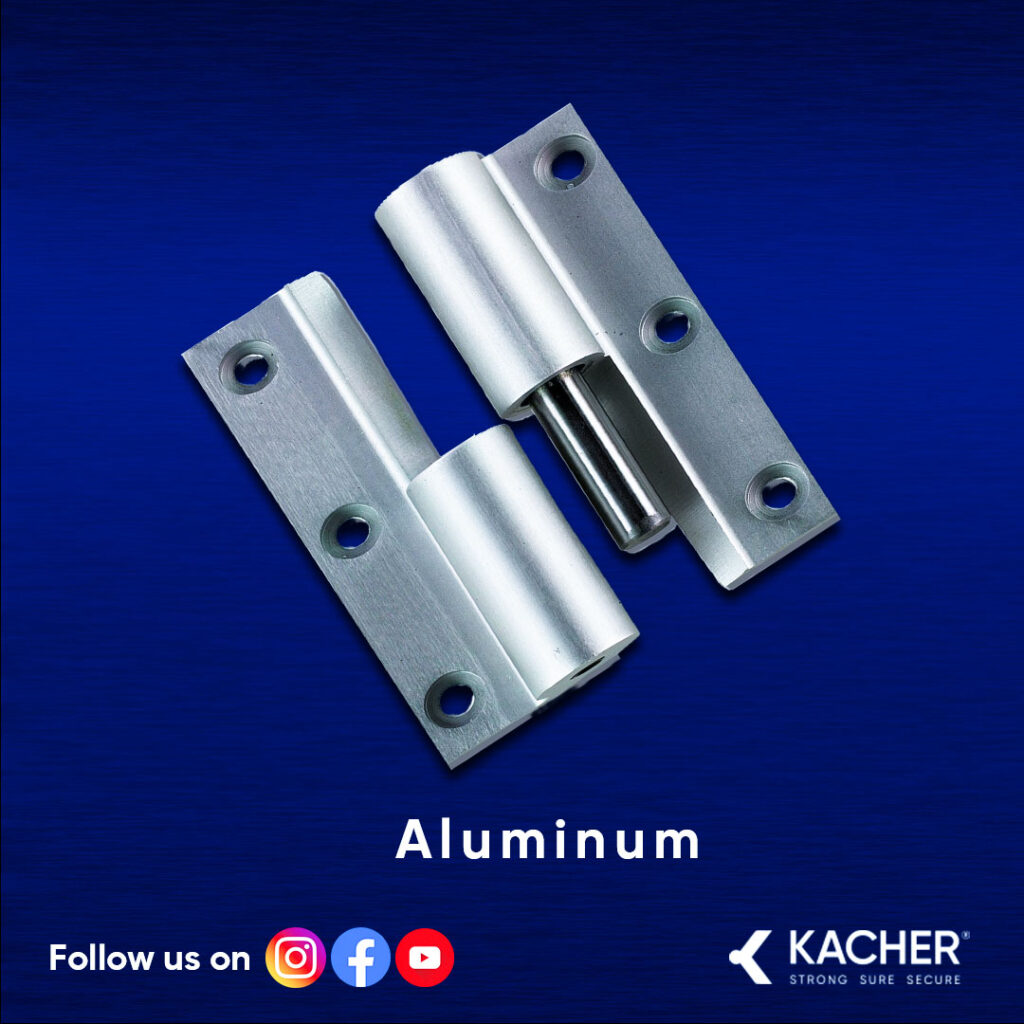
- Description:
- Aluminum is a pure metal, not an alloy, offering natural corrosion resistance.
- This material is very light weight.
- Advantages:
- Lightweight.
- Naturally corrosion-resistant.
- Cost-effective.
- Highly malleable.
- Disadvantages:
- Lower strength compared to steel.
- Can be susceptible to galvanic corrosion when in contact with dissimilar metals.
- Applications:
- Aircraft components.
- Lightweight doors and windows.
- Specialized hardware where weight is a concern.
4. Brass: Malleability and Aesthetic Appeal
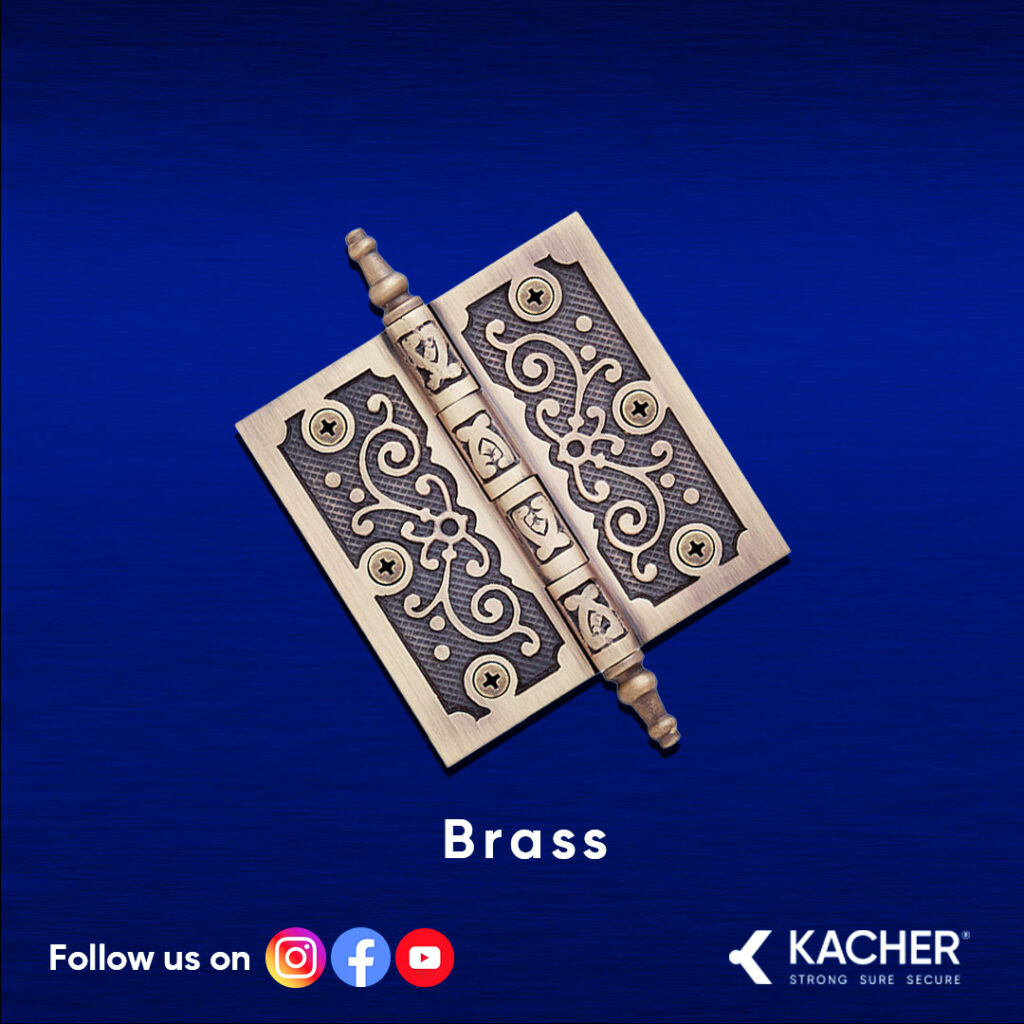
- Description:
- Brass is an alloy of copper and zinc, known for its malleability and aesthetic appeal.
- Advantages:
- Highly malleable and easy to shape.
- Aesthetically pleasing, with a warm golden hue.
- Naturally corrosion resistant.
- Disadvantages:
- Susceptible to stress-related cracking.
- Softer than steel.
- Can be more expensive.
- Applications:
- Decorative hardware.
- Antique furniture.
- Low-stress applications.
5. Bronze: Strength and Friction Resistance
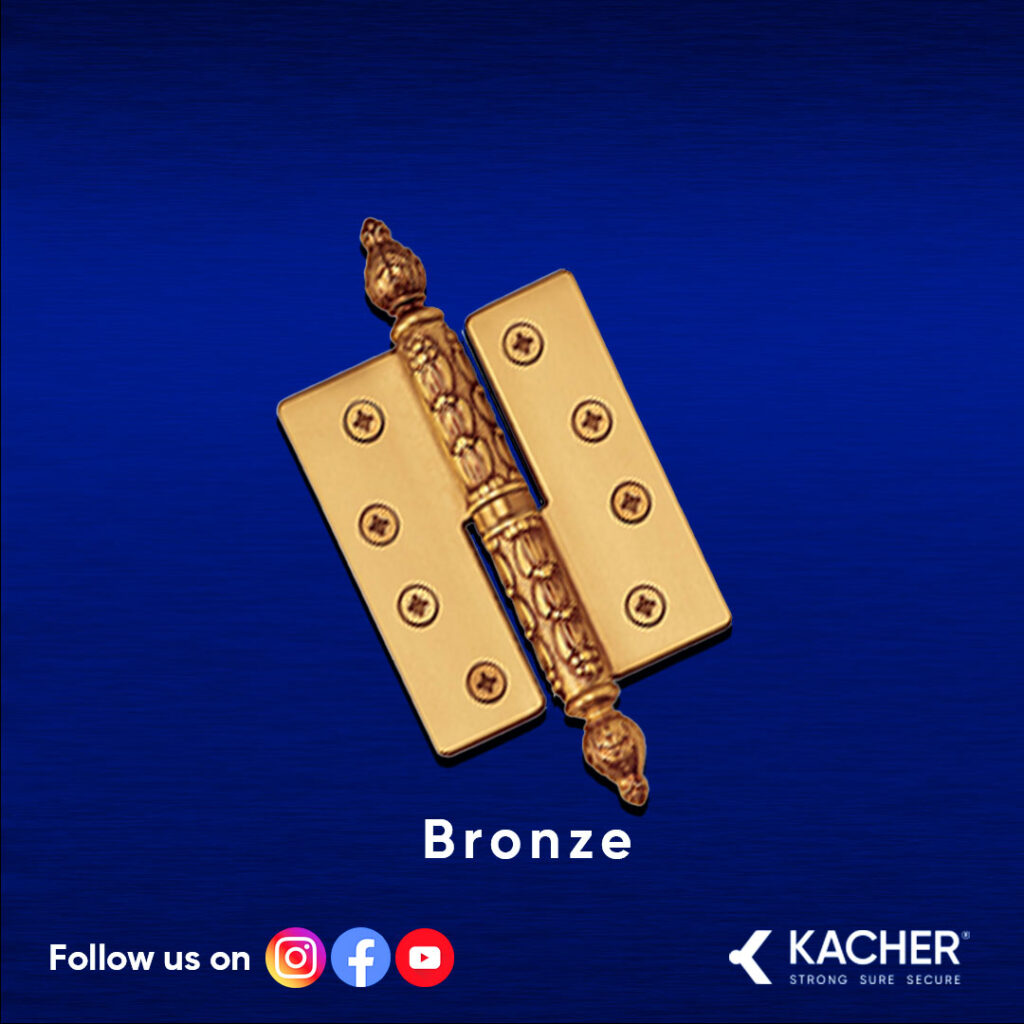
- Description:
- Bronze is an alloy of copper and tin, offering strength and friction resistance.
- Advantages:
- Relatively strong and durable.
- High ductility.
- Good corrosion resistance.
- Excellent friction resistance.
- Disadvantages:
- More expensive than brass.
- Heavier than aluminum.
- Applications:
- Marine hardware.
- Bearings and industrial applications.
- Architectural hardware.
Choosing the Right Material:
When selecting hinges, consider the following factors:
- Environment: Indoor, outdoor, marine, chemical exposure.
- Load requirements: Heavy duty or light duty.
- Corrosion resistance: humid or salty enviroments.
- Aesthetic preferences.
- Budget.
Conclusion:
Understanding the properties of different hinge materials is essential for choosing the right hinges for your needs. By considering factors such as strength, corrosion resistance, and cost, you can ensure optimal performance and longevity.
Also Read : The Ultimate Butt Hinges Guide: Types, Uses & Benefits
Also Follow us on Facebook : facebook.com/Kacher22
& Youtube : youtube.com/@arrowindustries438Post navigation

